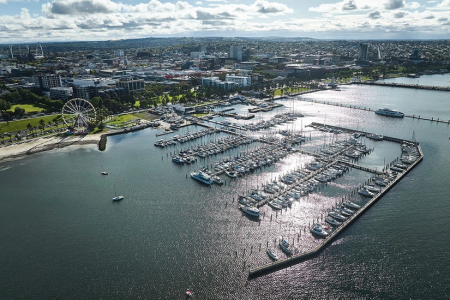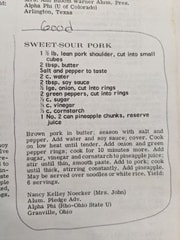Aussies are fleeing major cities for this little-known destination—and it’s not what you think!
By
Maan
- Replies 0
Relocating within Australia is nothing new—but the latest trends show a surprising shift in where people are choosing to go
One regional destination has quietly surged ahead, unseating a long-time favourite and becoming the new top choice for internal movers.
The latest migration data paints a revealing picture of changing lifestyles, growing regions and a post-pandemic rethink of what 'home' really means.
A fresh frontrunner emerged as the most popular regional destination for Australians packing up and moving house within the country.
Greater Geelong in Victoria overtook Queensland’s Sunshine Coast as the leading hotspot for internal migration, according to the latest Regional Movers Index (RMI).
In the 12 months leading up to March, the city accounted for 9.3 per cent of Australia’s net internal migration—just ahead of the Sunshine Coast’s 8.9 per cent share.
This marked the end of the Sunshine Coast’s two-year streak at the top of the index, a report compiled by the Regional Australia Institute (RAI) in partnership with the Commonwealth Bank.
Unlike general population data, the RMI focused solely on internal movements to and from regional areas, leaving out major capitals like Sydney and Melbourne.
So while Geelong did not attract more movers than Australia’s largest cities, it topped the list for regional net migration—calculated as the number of people arriving minus those leaving.
The trend reflected a broader shift that had continued since the pandemic, with capital-to-regional moves increasing nearly 11 per cent from the previous quarter and sitting 20.5 per cent higher than before COVID.
RAI CEO Liz Ritchie said the figures backed up what regional Australians already knew.
‘The nation’s love affair with regional life is showing no signs of abating,’ she said.
‘Contemporary regional Australia has what people are looking for... clichéd images and misconceptions about regional living are well and truly a thing of the past.’
Victoria saw strong growth overall, attracting 34 per cent of total regional net inflows during the March quarter—up from 28 per cent a year earlier.
Latrobe and Murrindindi, two regional local government areas in the state, recorded the fastest growth rates nationwide.
CBA Acting Executive General Manager Josh Foster pointed to multiple factors that made Geelong stand out.
‘In a first for the RMI, Greater Geelong has become the star performer due to its idyllic location, established services and range of employment opportunities,’ he said.
‘This is underpinned by significant government and corporate investment in the region.’
Major developments including the Geelong Convention Centre and the Barwon Women and Children’s Hospital played a key role in attracting new residents.
The Victorian government also set a long-term housing target of 128,600 new homes for Geelong by 2051.
The Sunshine Coast may have slipped from the top spot, but it remained a beloved destination—especially for those escaping city life.
Alanna, a former Sydneysider who relocated to the coastal region, explained what made the lifestyle so appealing.
‘For me, it's been the fact there's no traffic and (mostly) no issues with parking,’ she said.
‘I don't know if I can ever return to a one-hour commute.’
‘I love the lifestyle I can have with my partner, being able to live by the beach and having the beautiful hinterland close by.
‘There are great camping spots and rivers to go boating and fishing on.’
Queensland’s share of regional inflows dropped to 17 per cent from 30 per cent the year before, though it remained attractive thanks to lower housing costs and warm weather.
The Sunshine Coast held second place overall, followed by other popular Queensland spots like the Gold Coast, Townsville and the Fraser Coast.
Elsewhere, South Australia’s Victor Harbour and Western Australia’s Denmark and Harvey also saw a boost in popularity among movers.
Sydney recorded the highest net outflow of any capital city, accounting for 64 per cent of all city-to-region departures.
Around 40 per cent of those movers opted for regional New South Wales, which held strong despite a smaller share compared to Victoria.
Ritchie said the results showed clear opportunities for regional growth—but warned that support was crucial.
‘There are big economic gains to be made by supporting, facilitating and nurturing growth across the regions,’ she said.
‘Those benefits can only be achieved by ensuring communities have the infrastructure, facilities and funding they need.’
In a previous story, we explored some of Australia’s most breathtaking yet lesser-known towns.
These hidden gems offer incredible experiences away from the usual tourist trails.
Check out that feature to find your next unforgettable destination.

With Greater Geelong now leading the way as Australia’s favourite regional destination, what do you think makes a place truly irresistible to movers? Share your thoughts in the comments.
One regional destination has quietly surged ahead, unseating a long-time favourite and becoming the new top choice for internal movers.
The latest migration data paints a revealing picture of changing lifestyles, growing regions and a post-pandemic rethink of what 'home' really means.
A fresh frontrunner emerged as the most popular regional destination for Australians packing up and moving house within the country.
Greater Geelong in Victoria overtook Queensland’s Sunshine Coast as the leading hotspot for internal migration, according to the latest Regional Movers Index (RMI).
In the 12 months leading up to March, the city accounted for 9.3 per cent of Australia’s net internal migration—just ahead of the Sunshine Coast’s 8.9 per cent share.
This marked the end of the Sunshine Coast’s two-year streak at the top of the index, a report compiled by the Regional Australia Institute (RAI) in partnership with the Commonwealth Bank.
Unlike general population data, the RMI focused solely on internal movements to and from regional areas, leaving out major capitals like Sydney and Melbourne.
So while Geelong did not attract more movers than Australia’s largest cities, it topped the list for regional net migration—calculated as the number of people arriving minus those leaving.
The trend reflected a broader shift that had continued since the pandemic, with capital-to-regional moves increasing nearly 11 per cent from the previous quarter and sitting 20.5 per cent higher than before COVID.
RAI CEO Liz Ritchie said the figures backed up what regional Australians already knew.
‘The nation’s love affair with regional life is showing no signs of abating,’ she said.
‘Contemporary regional Australia has what people are looking for... clichéd images and misconceptions about regional living are well and truly a thing of the past.’
Victoria saw strong growth overall, attracting 34 per cent of total regional net inflows during the March quarter—up from 28 per cent a year earlier.
Latrobe and Murrindindi, two regional local government areas in the state, recorded the fastest growth rates nationwide.
CBA Acting Executive General Manager Josh Foster pointed to multiple factors that made Geelong stand out.
‘In a first for the RMI, Greater Geelong has become the star performer due to its idyllic location, established services and range of employment opportunities,’ he said.
‘This is underpinned by significant government and corporate investment in the region.’
Major developments including the Geelong Convention Centre and the Barwon Women and Children’s Hospital played a key role in attracting new residents.
The Victorian government also set a long-term housing target of 128,600 new homes for Geelong by 2051.
The Sunshine Coast may have slipped from the top spot, but it remained a beloved destination—especially for those escaping city life.
Alanna, a former Sydneysider who relocated to the coastal region, explained what made the lifestyle so appealing.
‘For me, it's been the fact there's no traffic and (mostly) no issues with parking,’ she said.
‘I don't know if I can ever return to a one-hour commute.’
‘I love the lifestyle I can have with my partner, being able to live by the beach and having the beautiful hinterland close by.
‘There are great camping spots and rivers to go boating and fishing on.’
Queensland’s share of regional inflows dropped to 17 per cent from 30 per cent the year before, though it remained attractive thanks to lower housing costs and warm weather.
The Sunshine Coast held second place overall, followed by other popular Queensland spots like the Gold Coast, Townsville and the Fraser Coast.
Elsewhere, South Australia’s Victor Harbour and Western Australia’s Denmark and Harvey also saw a boost in popularity among movers.
Sydney recorded the highest net outflow of any capital city, accounting for 64 per cent of all city-to-region departures.
Around 40 per cent of those movers opted for regional New South Wales, which held strong despite a smaller share compared to Victoria.
Ritchie said the results showed clear opportunities for regional growth—but warned that support was crucial.
‘There are big economic gains to be made by supporting, facilitating and nurturing growth across the regions,’ she said.
‘Those benefits can only be achieved by ensuring communities have the infrastructure, facilities and funding they need.’
In a previous story, we explored some of Australia’s most breathtaking yet lesser-known towns.
These hidden gems offer incredible experiences away from the usual tourist trails.
Check out that feature to find your next unforgettable destination.
Key Takeaways
- Greater Geelong overtook the Sunshine Coast as the most popular regional migration destination, with 9.3 per cent of net internal moves.
- The Regional Movers Index showed a continued rise in capital-to-regional migration, now 20.5 per cent higher than pre-pandemic levels.
- Victoria led in regional growth, with Geelong's rise driven by infrastructure projects and government investment.
- Despite its slip in ranking, the Sunshine Coast and other Queensland and coastal towns remain strong draws for urban escapees.
With Greater Geelong now leading the way as Australia’s favourite regional destination, what do you think makes a place truly irresistible to movers? Share your thoughts in the comments.








